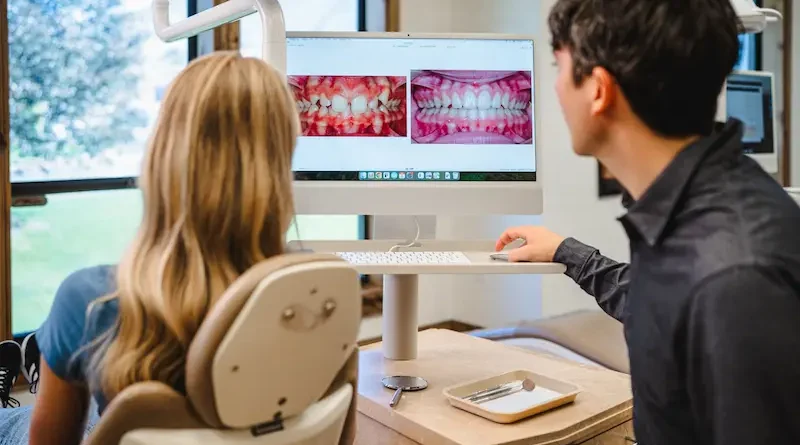The Art of Creating Engaging Dental Websites
Key Takeaways
- Understand the importance of user-friendly design in dental websites.
- Explore ways to integrate informative content with aesthetic appeal.
- Learn the role of SEO and how it can help attract more visitors.
- Discover the effective use of multimedia to enhance patient engagement.
- Recognize the significance of mobile-friendly design.
Introduction to Dental Website Design
For many potential patients, a practice’s website serves as their initial interaction point, offering critical information influencing their healthcare decisions. As such, a website’s design should be aesthetically appealing and convey trust and reliability.
A dental website acts as an online ambassador, guiding prospective patients through the maze of oral healthcare options. The site must seamlessly blend design elements with gripping content to provide visitors with a satisfying and informative experience. This interplay of visual aesthetics and engaging content differentiates a standard website from an exceptional one in the eyes of both first-time visitors and returning patients.
The Power of User-Friendly Design
User-friendly design is more than just a buzzword—it’s a vital feature of any effective dental website. This involves creating intuitive navigation, where visitors can easily find information about services, book appointments, or contact details without cumbersome clicks or confusing menus. Quick load times and engaging visuals ensure a pleasant experience that keeps visitors on the site longer. In today’s digital-first world, crafting an impactful dental website is indispensable to a thriving dental practice.
As Forbes Tech Council highlighted, prioritizing user experience is increasingly crucial in today’s competitive digital landscape. A user-centric design helps lower bounce rates and enhance visitor engagement, making it a strategic asset for any dental practice wanting to maintain a competitive edge online.
Content: Informative and Engaging
Content remains a dominant force in capturing and retaining a visitor’s attention. Successful dental websites are replete with content that educates and resonates with patients, helping build authority in the field. Whether it’s in-depth articles dissecting the nuances of a dental procedure or blog posts offering oral health tips, content should be crafted to address your audience’s everyday concerns and interests.
By providing informative and well-researched content, practices address patient queries and build trust. The Mayo Clinic exemplifies the impact of thorough content, demonstrating how valuable insights can empower patients in their healthcare choices and fortify the relationship between practice and patient.
The Role of SEO
Implementing effective Search Engine Optimization (SEO) strategies is essential for increasing a dental website’s visibility among potential patients. SEO is about making helpful content accessible to the right audience through strategic keyword placement, crafting meaningful meta descriptions, and building quality backlinks.
A well-optimized website ensures that when potential patients search for dental services, your practice appears prominently in their search results. This strategic approach increases traffic and attracts visitors actively seeking your services, increasing conversion rates and enhancing engagement.
Utilizing Multimedia
Incorporating multimedia is an advantageous strategy for elevating the user experience on a dental website. Videos can effectively demystify complex dental procedures, providing a visual explanation that is easier for many to digest than text alone. Additionally, videos of patient testimonials or introductions from dental professionals add a personal touch that can birth a sense of connection and trust.
Interactive elements such as quizzes and infographics further engage visitors, catering to diverse learning preferences. These creative additions enrich the website experience and encourage extended visits, increasing the likelihood of conversion from visitor to patient.
The Importance of Mobile-Friendly Design
In an era dominated by mobile internet usage, having a mobile-responsive website is non-negotiable. The mobile-friendly design ensures that the website adapts to various screen sizes and devices, providing the same smooth experience regardless of how it’s accessed. This adaptability is critical as more users use smartphones and tablets to browse.
Failure to accommodate mobile users can result in lost opportunities, as potential patients may move on to a competitor’s site that caters to their device preferences. Adopting a responsive design approach ensures that your site remains inclusive and accessible, reinforcing the practice’s commitment to patient ease and satisfaction.
Real-Life Examples of Successful Dental Websites
Examining real-life examples can provide valuable insights and inspiration for anyone seeking to develop or enhance their dental website. Many successful practices utilize a mix of patient testimonials, before-and-after photographic galleries, and videos to create a dynamic and appealing site that fosters trust and transparency.
By presenting authentic experiences and showcasing the quality of services provided, these websites create a narrative that aligns with patient expectations and concerns, ensuring a cohesive and impactful online presence.
Conclusion: Investing in a Quality Website
Investing in a professional and engaging online platform is not merely an expense for dental practices—it is an imperative. A well-designed website is both a digital handshake and a convenient resource for current and potential patients. By leveraging these digital assets, practices can effectively reach out and build lasting relationships with their community, ultimately supporting patient satisfaction and business success.
Visit the rest of the site for more interesting and useful articles.

